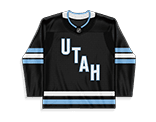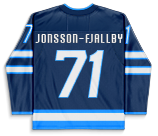Kuhlman has scored one goal with one assist in 19 games with the Bruins this season. The 26-year-old has accumulated 15 points (7G / 8A) across 75 career NHL games to-date.

Kuhlman has scored one goal with one assist in 19 games with the Bruins this season. The 26-year-old has accumulated 15 points (7G / 8A) across 75 career NHL games to-date.

Pitlick was claimed by the Wild from Nashville in early October and had 11 points (6G / 5A) in 20 games before being waived on Tuesday. He should slot into the Canadiens bottom-6 immediately.


The Lightning claimed Nash off of waivers from the Jets in early December and was waived Wednesday to clear room for Nikita Kucherov to return on Thursday. Nash has yet to record a point in 25 games with the Jets and Lightning this season.

Johansson was placed on waivers because Pavel Francouz returned to the Avalanche over the weekend. Johansson has posted a 3.89 GAA and .880 SV% in six games this season and will be the Panthers' No.3 netminder moving forward.

Connauton was in and out of the Panthers lineup over the last month and was waived yesterday with Gustav Forsling returning on Tuesday. Gabriel Carlsson will remain with the Panthers now that Connauton is gone.

Nash played a very small role in Winnipeg, playing just 8:49 ATOI. He failed to record a single point in nine games and it's difficult to figure where he'll slot into the Lightning lineup. Perhaps they are bringing him in as a cheap ($750K AAV) reserve forward.

Clague was a second-round pick (No.51 overall) in 2016 and was waived by the Kings after just 33 career NHL games. Clague has picked up five assists in 11 games this season and will likely factor in full-time on the Canadiens' blueline.

Wolanin was originally claimed off of waivers from the Kings but returns to Los Angeles and can now be sent to the AHL without having to clear again. The 26-year-old was held pointless in his only game with the Sabres.

Gaudette was traded to the Blackhawks last April, picking up two goals and four assists (six points) in 15 games with Chicago between last year and this year.

Bastian was selected in the expansion draft but returns to New Jersey on waivers. Bastian has scored one goal with one assist in 12 games with Seattle.

The forward-needy Golden Knights will likely plug Brooks right into their lineup on Thursday. Vegas will be Brooks' third team of the season, after previously being claimed from the Maple Leafs. He has one assist in four games this season.

Aube-Kubel was a second-round pick of the Flyers in 2014 and was a regular member of their team in 2020-21. The 25-year-old had 12 points (3G / 9A) in 50 games last year but was buried on the depth this year. He now heads to Colorado, where he'll likely battle with Kiefer Sherwood for a spot in the bottom-6.


Barre-Boulet was lost to the Kraken on waivers but returns to the Lightning after playing two games with Seattle. Being re-claimed by the Lightning will allow them to send him to the AHL.


Cholowski was selected in the Seattle Expansion Draft but was waived on Wednesday. In Washington, Cholowski will likely battle with Trevor van Riemsdyk for playing tie on the blueline. He has 10 goals and 17 assists (27 points) in 104 career NHL games (all with Detroit).

Brown found himself on the roster bubble in Vegas but gets a chance to crack the Flyers roster after being picked up off of waivers. With Kevin Hayes out to open the season, the Flyers are a little thin down the middle, which is why they added the 29-year-old Brown. He has just three points (2G / 1A) in 33 career NHL games with Carolina and Vegas.

Barre-Boulet was an undrafted free agent who has put up outstanding point totals in the QMJHL and AHL. Last season he had 12 points (8G / 4A) in 10 games with Syracuse but just three goals in 15 games with the Lightning. In Seattle, he'll have a chance to make an immediate impact, especially with four forwards on the COVID-19 protocol list to open the season.

Jonsson-Fjallby was claimed off of waivers by the Sabres last week but quickly returns to Washington. The Capitals were the only team to put a claim in for Jonsson-Fjallby, so he was eligible to be sent to the AHL. The 23-year-old winger had 10 goals and five assists (15 points) in 31 games with Hershey last season.
